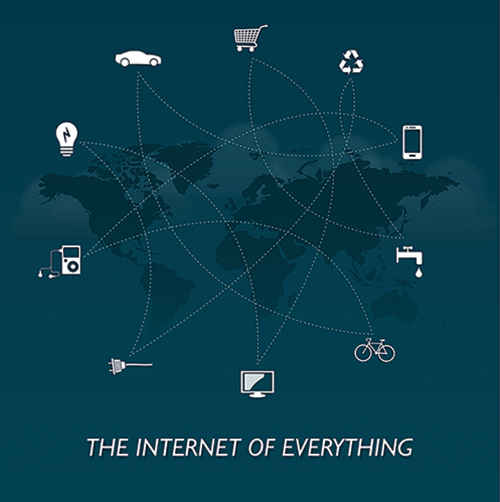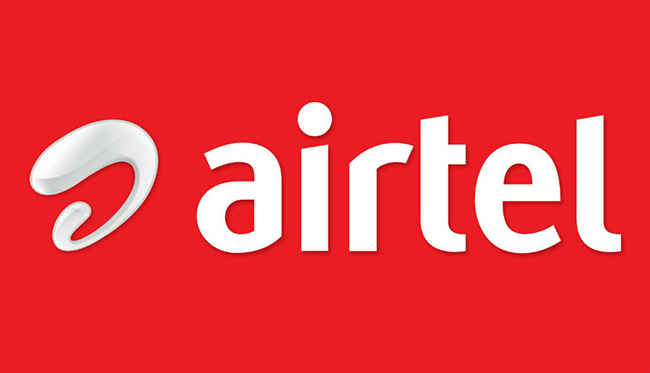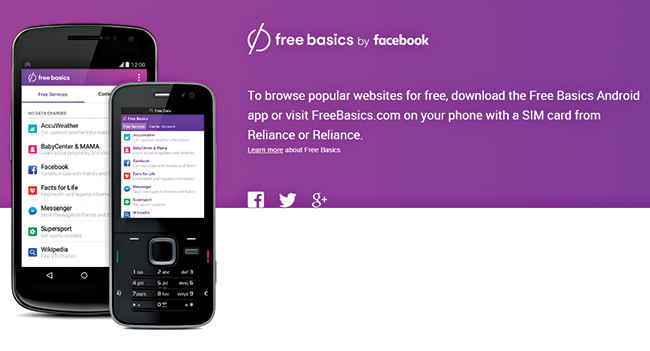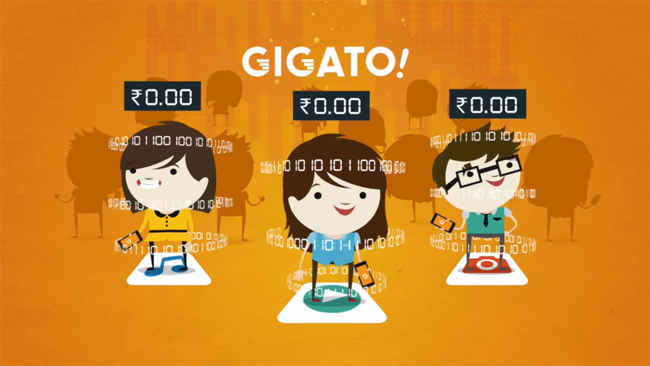India does not need Net Neutrality. We tell you why
With only a small portion of the population connected, are we absolutely sure we want to take a hardline approach on this issue?

Until about a year ago, Internet connectivity was just another service to us like Electricity and Cable TV which we’d come to take for granted. None of us ever gave a second thought to whether we would be able to access YouTube as easily we could access Facebook, or access Skype as easily as Whatsapp. But come December 2014, the internet was suddenly abuzz with posts, discussions, videos, interviews, all about one thing: Net neutrality.
 Survey
SurveyIn the past five years, the Internet has been globally subjected to a lot of debate pertaining to network neutrality and differential pricing. Countries, as contrasting as Chile and Netherlands, have adopted laws and legislation specifically aimed to keep the Internet an equal platform. And thanks to the Internet itself, when India’s turn came to face its lack of Internet specific laws it wasn’t caught unawares.
Specifically initiated by Airtel and subsequently picked up by other network providers, the idea of charging for Over-The-Top services, like Skype or Whatsapp, received renewed vigour since the beginning of this year. Network providers and OTT services have been at loggerheads on this, with network providers demanding a pay-per-use billing model for these services instead of billing based on bandwidth consumed. It is often speculated that the drop in revenues from voice calls vis-à-vis the growth in popularity of VOIP and drop in SMS traffic vis-à-vis chat apps is what prompted telecom operators to push for these measures. On the other hand, OTT services have demanded unregulated access to the internet without any hurdles for their growth and development. In April 2015, Telecom Regulatory Authority of India (TRAI) proposed a separate Regulatory Framework for OTT services, beyond the standard rules that govern the internet. This violated the basic foundation principle of a neutral internet, or as popularly known, net neutrality. Or did it?
With less than 30% of the Indian population online, how much Net neutrality do we really need?
The Unbiased Principle
The principle of net neutrality dictates that data over the internet has to be treated without any bias. This means that the internet can be used for anything by anyone without experiencing additional costs or limitations. For the sake of understanding this concept let’s take this example: Consider the internet to be the power supply you receive at your homes. The concept of neutrality dictates that no power supply company or technician is allowed to alter the supply in such a way that you get higher voltage when you use your washing machine than when you use your vacuum cleaner, or charge you extra money if you decide to watch TV.The terms of watching your TV are decided between you and your cable provider alone, without interference from the power company. Similarly, the terms of an OTT service on the internet should not be under any influence from the underlying Internet provider. This is important for two reasons.
First, Suppose if Airtel provides a Viber only data pack for Rs.100 and a Hike only data pack for Rs.120. To retain its users, Hike will have to find a way to compensate users for that extra 20. And that way might come at the expense of other funds, like R&D and innovation. This reduces their ability to decide their own method of functioning to actually achieve what they set out to do with their idea or product.
Second, one of the basic things that a network provider has the technical power to do is selectively throttling or boosting the access speeds for a certain OTT service. Now, if Flipkart opens at the blink of an eye and Snapdeal keeps you perpetually waiting in a country already at the lower rungs when it comes to average internet speed, we all know which site we will shop from. This hasn’t been proposed or tried in India yet, but it might be well on its way once we allow networks to interfere with the basic functionality of OTT services. Certain telecom majors have been trying to push the logic that they are similar to Highway corporations in the way they function. According to them, just like Highway corporations receive tolls for maintaining the Highway, they too deserve some form of regular monetary compensation from OTT content providers. The only and perhaps the sufficient reason why that is absurd is that they already do receive regular monetary compensation for maintaining those highways of data: Internet Bills!
A company like Bharti Airtel, one of the earliest proponents of regulating OTT services, had posted a rise in profit by 30% from Data usage as per reports in April 2015. This is the same provider that tried to bring in separate internet usage plans for VoIP services in December over concerns of lost revenue.
Hence it was no surprise, that when TRAI tried to discuss Regulatory Framework for Over-the-Top Services over an open forum, it got over a million responses in spite of a short deadline. The email address releasing debacle that followed was highly unfortunate and irresponsible on the part of TRAI, but the netizens of India had made their stand on net neutrality as clear as daylight. After all, it is only because the internet is neutral that applications like Whatsapp, YouTube, and Skype could become so good at what they do. And for more of them to come by, be developed and used, OTT services have to stay unaffected.
Free Internet or the Free Internet?
Zero has always been a too-good-to-be-true number to show up on bills of any kind. So when Airtel launched the Airtel Zero platform in April 2015, the internet smelt something fishy and was up in arms in no time. The fact that it came right after the whole TRAI-OTT issue did not help its cause either.
Zero Rating is a scheme under which Mobile Network providers and ISPs do not charge the customer for data used to access certain specific websites or applications. For a developing country like ours, Internet is a very strong tool to put growth on the fast lane. From the advent of the Internet into homes to the comparatively recent smart-phone revolution, the economy of any sector has improved due to connectivity and the easy availability of information. In spite of that, when a financially deprived citizen wants to use the internet, one of his most prominent hurdles is the cost. Facing the choice between spending money on basic necessities or the internet, it is evident why less than one fifth of the population is connected. Until the gap between the cost and the need for connectivity is bridged, it is unlikely that Internet will be used to its full potential in India. This is where Airtel decided to give it a shot.
Airtel Zero is a platform based on zero rating where Airtel customers can access certain apps or parts of apps and websites for free. The app developer or company pays for the data consumption on their app and the customer is still free to access other apps or websites by paying for the data being used to access them. This gives the impression that Airtel is trying to create a separate island of privileged content providers who have the required bank balances to compensate Airtel’s bandwidth costs. The start-ups which rely heavily on popularity for their success would now face another formidable barrier to compete with big and established competition. For obvious reasons and severe backlash, Flipkart, one of the most prominent companies to show interest in this, took a step back and exited the platform.
Free Basics
Internet.org, Facebook CEO Mark Zuckerberg’s brainchild, was launched in August 2013 with the goal of achieving a connected world. His vision was to bring basic internet connectivity to the less developed parts of the world in the form of affordable access. Similar to Airtel Zero, it is a platform centred on the idea of providing certain services like News, Weather Forecast, Messaging and more to the user without any data cost. The intentions are clear: to get a vast majority of the Indian populace online, empowering them to achieve more. But it is undeniable that this concept treads on the neutrality of the internet. Providing selective free access, even with the noblest of intentions, to a population of this size indicates a strong advantage for the provider. It does raise the question that if Orkut could have done the same, would we even have a Facebook today?
Launched in India in February this year, Facebook’s timing was unfortunate to say the least. Even if there was any promise to be seen at the onset, it was promptly drowned in a barrage of net neutrality related accusations. The biggest point in question is Facebook’s tie up with Reliance Communications providing exclusive access to the platform on their network. Any form of free access over a mobile network certainly attracts more users to the network compared to other networks which charge the users for the same services. Perhaps Facebook’s initiative does not have monetary goals, but unfortunately the same cannot be said for what Reliance stands to gain from it.
The European Solution
The Net Neutrality debate has been one with global implications. In recent times, most countries have either adopted regulations regarding the internet or are currently grappling with the same. The objective has been to achieve a solution that strikes a balance between user demands and the industry. The European Union seems to have achieved that with a Europe-wide net neutrality regulations standard.
One of the most interesting parts of the rules they have adopted is the exceptions list to traffic management. They have set aside some situations where a network provider is allowed to perform actions like blocking, throttling, degradation or discrimination of data over the open internet. The situations are:
- If ordered by the law
- If threatened by cyber-attacks
- If network is temporarily congested
As small as they may seem, the above list of exceptions is actually exhaustive and they are well on their way to set up national level regulatory committees which will penalize any violation. Also, they have legalized the provision of better speeds to innovative services like IPTV or telesurgery on the condition that they may come only on top of the existing free internet, not as a substitute. They must use the same internet protocols as the rest of the internet. This preferential position has to be objectively necessary for the service to operate, and it should not affect the free internet.
As ingenious and encompassing as the solution may seem, it doesn’t really have a possible Indian counterpart at present. With the current stage of connectivity, the network congestion issue in India is a much more frequent phenomenon than the exceptions in the European model can allow. The services mentioned above which require better connectivity are not a primary need for the unconnected India in the near future. However, establishing a national level regulatory body for the Internet and issues pertaining to it might just give the regulatory aspect of India’s internet some much needed direction. Until that is done, we at least need to try and think of some new concepts to tackle the increasing dilemma between our need for connectivity and our right to a neutral internet.
The Unachievable Grey
We saw the differential pricing. We saw the free platforms. We had our debates and discussions on upholding and violating net neutrality. And then, along came a new concept: Data Refund.
The simplest and most accessible counterpart that can be provided to this is the cashbacks provided by online stores on the purchase of a certain product or of a certain amount. Take the example of Gigato, an android app, which rewards you with data balance for certain specific data usage. The rewards are app specific and are added to your account once the said data is consumed on that app, e.g. 10MB awarded to you for using 10MB of your mobile data on Whatsapp.
So does this violate net neutrality or not? That is more complicated a question than it appears. Although it does favour apps which can pay Gigato for the data reward, it does not set any restrictions on how that data can be used. So basically, you, as a user, are encouraged to spend more data in any way you see fit.
The way Gigato achieves this is by rewarding you a total data balance once you have achieved a certain total target MBs of rewards spread across a number of apps. This assures that they provide app downloads and usage to their partners, while providing free unregulated data to their users. A win-win for all.
The Data-vu
Interestingly, we came across Gigato in from two vectors recently. One was through an interview with it's CEO and next in a strongly worded letter drafted by the Save The Internet collective to Mark Zuckerberg after his IIT Delhi townhall address . It was cited as an example of how Facebook can realise its vision without creating barriers. What’s interesting is that it made us at least mull over our stance on net neutrality (if not question it outright).
If properly analysed, the similarities between Gigato and Airtel Zero are unmistakable. What differs is only that the data is received in the form of a reward from Gigato, whereas by using Airtel Zero you save more of your data balance. An average person, without a zero rated platform, still has to pay the same price for usable data as the rest of the population to access the entire internet. Now, if some of the things he accesses become free of cost, he just pays a lesser amount to access the same internet. It need not be retold how this benefits the low income class of India. The two ideologies of net neutrality and the speedy adoption of internet cannot practically go hand in hand. If the private sector is to be entrusted with the noble endeavour of getting online the 700 million strong still unconnected populace certain innovative measures that don’t outright violate network neutrality have to be adopted. Similarly, Facebook’s Internet.org achieves efficient price discrimination, not quite unlike Satellite TV operators providing channel packs at lower costs based on what the user watches. Coming to the technical side of Zero rating, it has been established by observation and several studies that the quality of a network increases with an increase in the number of users. To continue with the Highway example, ask yourself where should you build a six-lane highway: a road actually suffering congestion or somewhere desolate where it might not be utilized fully?
Numbers are good, so is competition
The Internet is a two sided market. A greater number of users encourage content providers and app developers to expand and reinvent their services. Simultaneously, a diverse and expansive range of content which is easier to access attracts more subscribers to the internet. In short, the more the netizens, the more the variety of content available. Along with that massive usage, something like Internet.org will also create a healthy competition between networks, where the end user stands to gain. This ultimately reinforces the belief that some internet is better than no internet.
The Golden rule of Internet: Think before you speak, or be trolled
Violation of net neutrality is not acceptable in any form and its opposition to any extent possible is justified. The part where such an opposition becomes harmful is when it relies on misinformation and herd mentality to reach a decision without really getting to know the essence of the matter.
We have rightfully opposed Facebook and Airtel for their misguided endeavours, considering that they are both massive corporations who cannot assure us that their ‘free’ services won’t turn into monopolies and bite us back in near future. But what is also true, is that instead of being told what they are trying to achieve by the advocates of one side, perhaps we should consider both the sides, find a balance and then make a decision.
Or maybe we’d rather get trolled.



